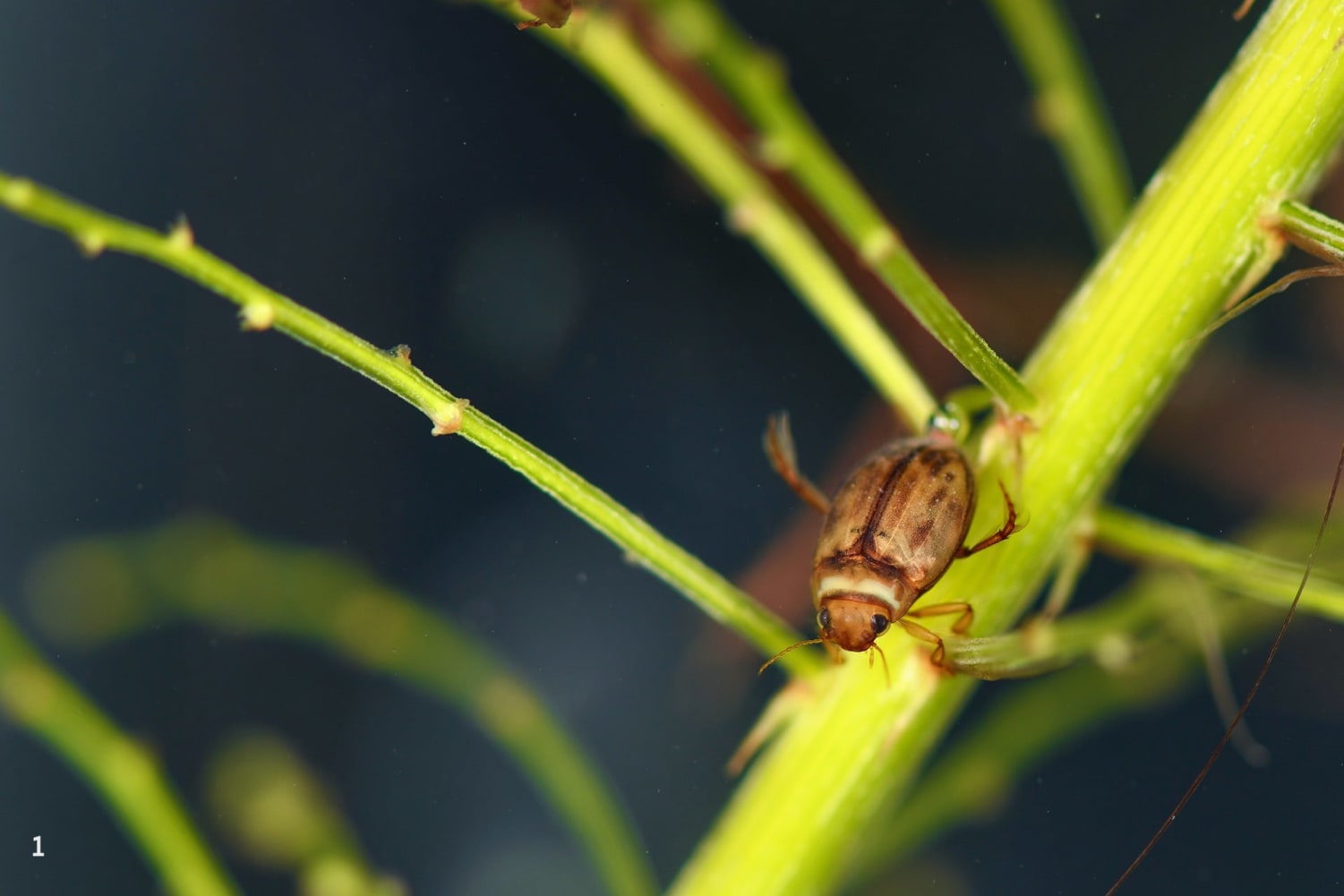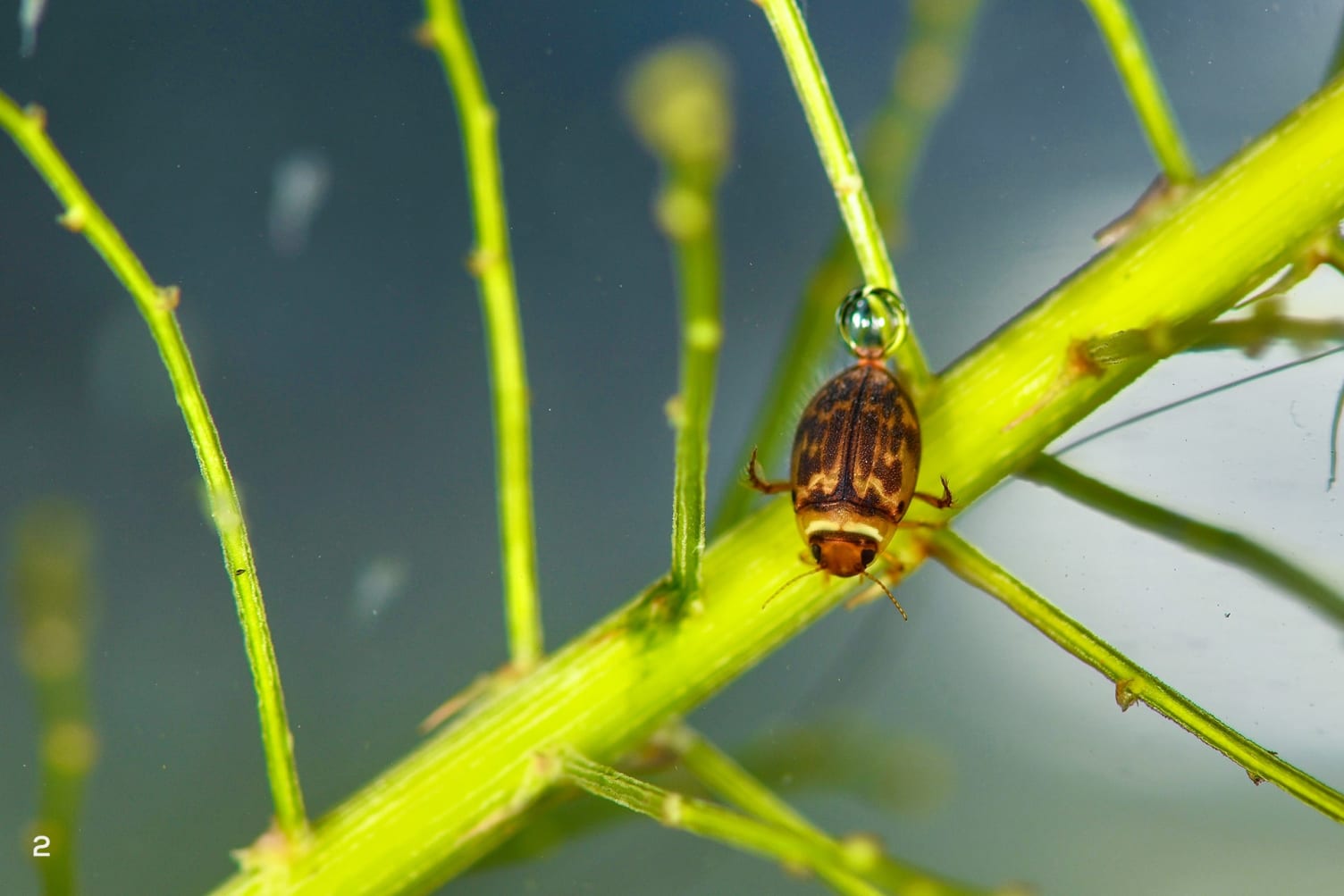 Listen to this article
•
15:34 min
Listen to this article
•
15:34 min
In the spring of 2023, while walking the quiet paths of Sukhna Wildlife Sanctuary, near Chandigarh, during the annual bird survey, a team comprising me and individuals from the forest department and Chandigarh Bird Club noticed something that didn’t sit right. With binoculars and notebooks in hand, we traced our usual route through the numerous check dams, perennial rivers, and forested slopes that act as a waypoint between the Himalayas and the northern plains. But as we tallied our sightings, a pattern emerged; the reservoirs, usually alive with ducks, grebes, and waders, were eerily quiet. At first, we blamed the time, the weather, or assumed the birds had already moved on. But this pattern had been consistent since 2017, with fewer and fewer birds seen each year. Perhaps, we thought, the bird hadn’t left at all; perhaps their food had. Puzzled, we decided to examine what was happening under the water.
We set out on an expedition like treasure hunters, to map and explore each reservoir in the sanctuary. With a D-net in hand, we waded into the edge of a dam where reeds bent in the breeze, swept our net through the water, poured the contents into a large spill tray, and what we lifted from the shallows felt more like opening a lost-world cabinet than doing routine fieldwork. The tray bubbled with life: ghostly zooplankton that shimmered like dust in slow motion; damselfly nymphs slender and delicate as fairy figures; backswimmers paddling elegantly on their backs; bright red fly larvae curling and uncoiling; even a water scorpion appeared, its claws folded like miniature spears. And then there were the beetles. Small, streamlined, and bright as amber with variable black patterns on their backs, they darted through the debris like guided bullets. At a glance, many were deceptively similar, but their shimmering elytra (wing cases) patterns and the faint sculpturing on their heads hinted at diversity far greater than the eye first registered. We collected them, and under a microscope, the differences multiplied.

Cover: A female Cybister tripunctatus (three-punctured diving beetle) clings to submerged vegetation in the Julahewala reservoir’s deepest region. Up close, its elytra (wing case) flashes a metallic green that only appears at certain angles of light. Its large body and spacious air storage under its wings allow it to stay and hunt underwater for longer periods.
Museum collections and the expertise of taxonomists at institutions such as the Zoological Survey of India and the Natural History Museum proved invaluable. That was when the story deepened for us, as the world held over 13,000 described species of water beetles, and nearly a thousand from India alone. After getting lost in the large museum cabinets and stacks of specimen drawers, we discovered that some of our specimens matched known species, but three did not. The mismatch was so complete that we realised we were holding something not recorded in the literature. In the dim, excited hush of the lab, we recognised the possibility that we had, quite literally, pulled a new species out of the Shivalik water. Identifying and describing insects (taxonomy) quickly became a hands-on lesson. At first glance, dozens of beetles looked the same. Upon examining under a microscope, the truth emerged. The males’ tiny genital structures, strange, sculpted and precise, acted like keys, each unlocking a different species. It was slow, patient work, but also like a thrilling detective story, where every detail mattered to identify the species.
Water beetles are not a single group but a guild of lineages that have each adapted to the same element (water) in astonishingly different ways. In the small, vegetated dams, we found Dytiscidae, the predatory diving beetles, glossy and powerful predators that will tackle tadpoles, small fish, and anything they can grasp. On sunlit surfaces, the alien-like whirligig beetles traced circles, their bodies flashing as they spun. Their family, Gyrinidae, dates back to the Jurassic, and their split eyes allow them to watch above and below the surface at once. In the stony streams crowded with Chara algae lurked duller but tougher Hydrophilidae beetles. These water scavenger beetles, that fed on decaying leaves, lacked the grace of their diving cousins, but not their tenacity. And in mossy trickles that barely counted as streams, Hydraenidae, or minute moss beetles, smaller than a grain of rice, moved like animated dust motes.
Beyond taxonomy, the beetles’ ecology was a constant source of wonder. Male predatory beetles had suction cups on their forelegs, structures that, when viewed under the microscope, were miniature masterpieces. The cups differed in size and form between species, corresponding to their habitats: small, textured pads for clinging to the rough surfaces of rocky streams; broader, smoother cups for grasping the sleek elytra of mates in calmer waters. In some species, we observed collective movement. Herds of beetles huddling, shifting as one through submerged vegetation, while others behaved like solitary ambush predators, lying motionless before striking. We were so amused observing them underwater as they came up to the surface to trap a bubble beneath their wing cases and slip back down, essentially carrying their own tiny scuba tanks. Their larvae, fierce and unrelenting, lived up to the name “water tigers” as we watched one larva devour five mosquito larvae in a single minute, followed by cannibalism of its own siblings when the mosquitoes ran out. Such voracity signals why these beetles are effective biological controllers of mosquito populations, arguably a more natural and less destructive option than introducing foreign fish such as the Gambusia affinis, which is now invasive and disruptive in many Indian waters.

What struck us most was not just their predatory skill but their sensitivity. Water beetles are excellent bio-indicators: many species are intolerant of even slight deterioration in water quality, while some are more tolerant. Their presence, abundance and community composition can act like an early-warning system, signalling declines in habitat quality long before the consequences are obvious to humans. In Sukhna, the reservoirs that had lost the most sensitive beetles were often the very ones where waterfowl had thinned out. The chain was clear — weaken the invertebrate community, and the birds that feed on them will fade too.
For us, the work that began as a search for missing birds widened into a richer narrative about connectivity. The check dams that stitch the landscape are not merely water-management structures; they are nodes in a living network. And water beetles, whether predators, scavengers, divers, or specks, are the quiet custodians of this freshwater. They keep it clean, recycle its nutrients, regulate its pests, signal its health, and remind us that conservation is as much about the unseen small things as it is about the conspicuous. Now, whenever I walk beside a reservoir or a shaded stream, I cannot help but wonder: what lurks there, unseen, hidden in plain sight? The Shivaliks have many stories to tell, and sometimes all you need to hear them is to kneel and look beneath the surface.







